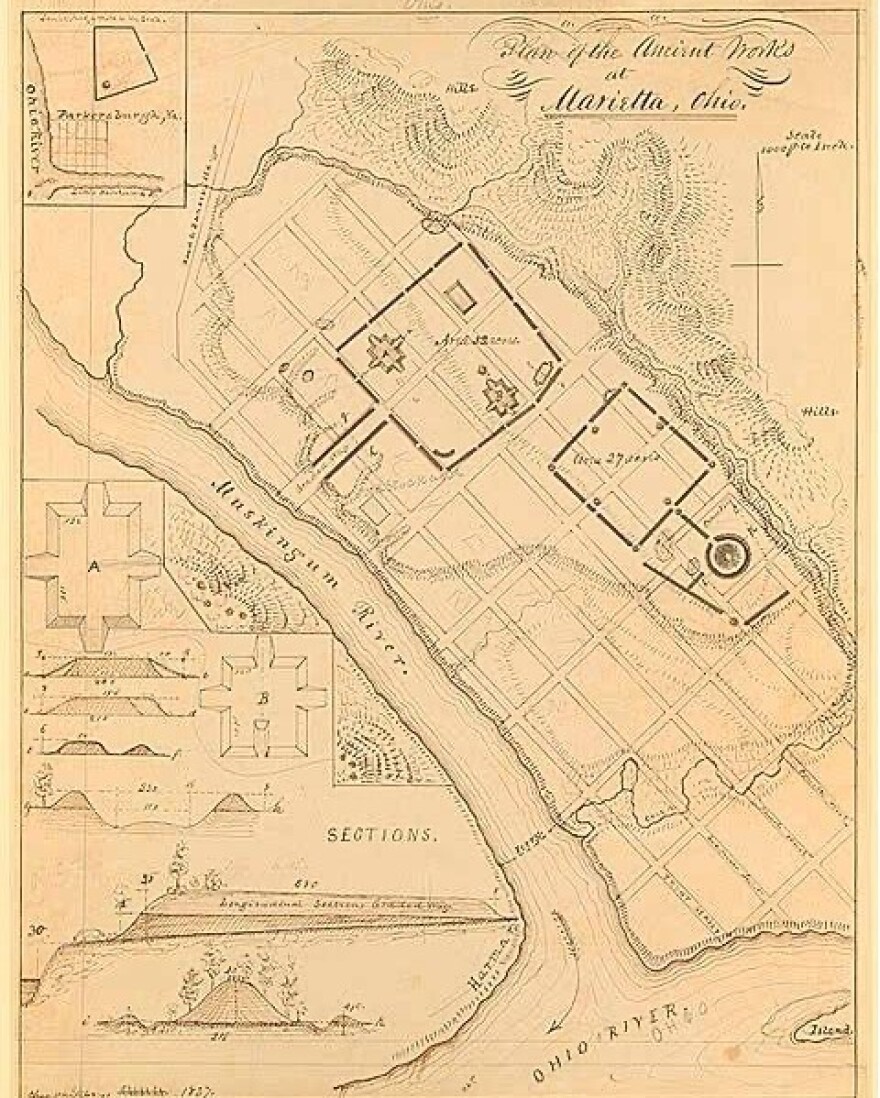Across most of Ohio, the sun rises just before 8 a.m. on the winter solstice.
It sets not even 10 hours later.
When it does, it’ll line up perfectly with an earthen structure built more than 1,500 years ago by the Adena and Hopewell people in what is now the city of Marietta.
“Visually, we can see the sun coming down right in the center of a long linear space that was created by parallel walls prehistorically,” explained archeologist Wes Clarke, who studies the area’s mounds.
Every year on the sunset of the winter solstice, Clarke leads a public viewing to observe the phenomenon. (You can watch it online here, if the weather cooperates.)
“It is incredible the amount of observation that obviously went into acquiring the knowledge of these astronomical events,” Clarke said.
One purpose of these earthworks, archeologists believe, was to mark the passing of time and seasons.
“We are so used to having a clock and a calendar readily at hand that we take it for granted that we know where we are in the year,” Clarke said. “But folks historically needed to know that too.”

The solstices were likely indicators of a schedule that included gathering and cultivating food, Clarke said, but they could have been reasons for social celebrations too.
Either way, it took a feat of engineering to mark the solstices with earthworks, and Clarke said the structures prove just how advanced the ancient societies were.
“Being able to incorporate astronomy, to do the survey and the layout work, and then to actually construct these earthworks so that they would last for hundreds and thousands of years, I think just represents a tremendous amount of knowledge,” he said.
Marietta’s earthworks aren’t the only to track astronomical alignments.
The head of Serpent Mound aligns with the summer solstice sunset, and its tail with the winter solstice sunrise. Meanwhile, the Octagon Earthworks in Newark almost perfectly tracks the 18.6 year lunar nodal cycle.
Observing alignments like these never gets old, Clarke said, especially with a group of onlookers who are equally awed.
“I'm always impressed, when we gather at this linear space to watch the winter solstice sunset, with how taken people are with the experience of seeing an event that was created intentionally 1,500 to 2,000 years ago by people with the knowledge to know that was going to happen,” he said.



